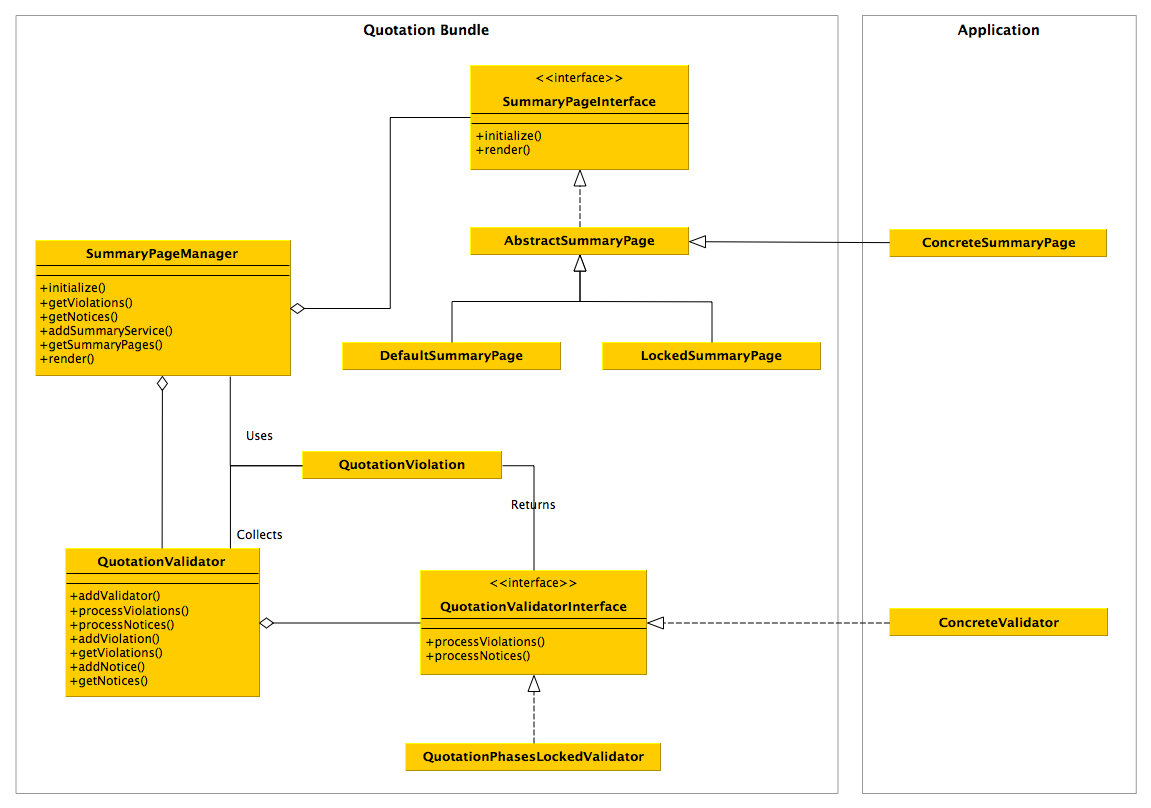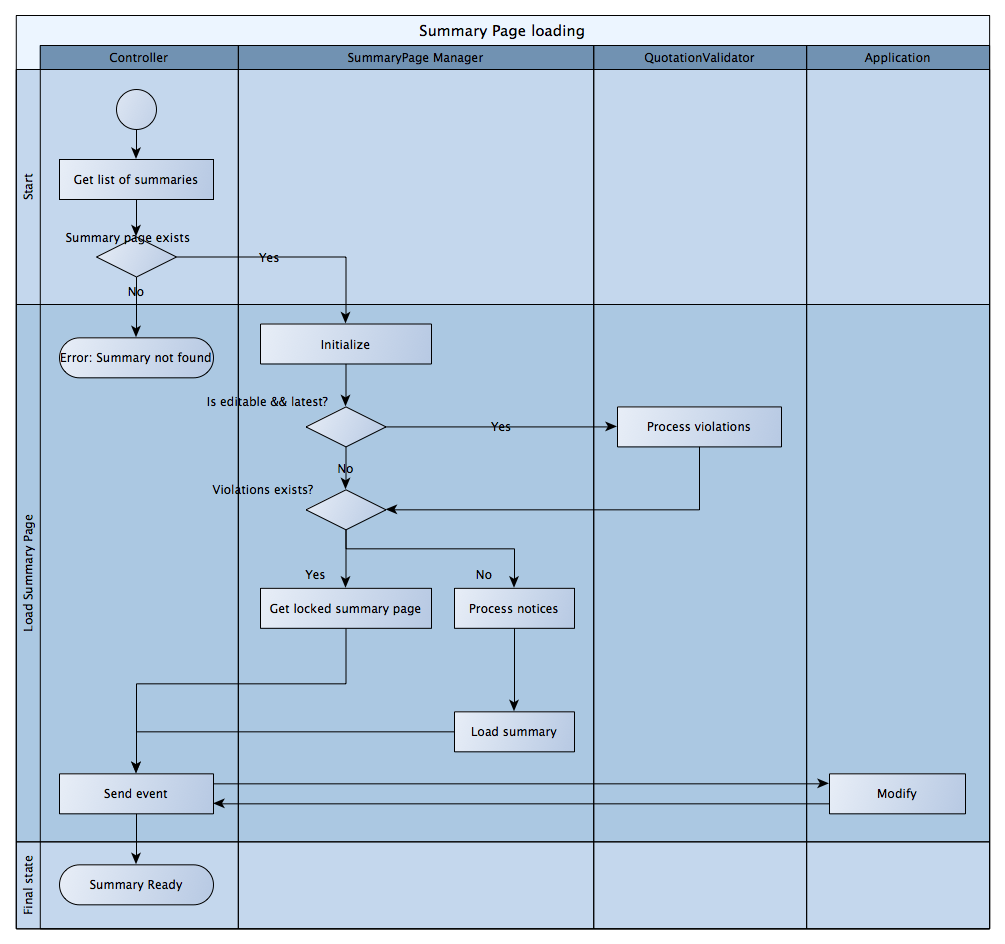Offering Summary Pages
Introduction
Offering Summary pages present a summary of the user input choices. By default, this is a hierarchical tree for the product structure. You can also define additional summary pages that can complement or replace the default implementation.
Class diagram:

Below is the process used to load a summary page.

New Offering Summary Service
To add a summary page, create a service that implements the interface in Klaro\QuotationBundle\Api\SummaryPageInterface (in practice, it is better to extend Klaro\QuotationBundle\SummaryPage\AbstractSummaryPage).
Tag the service with the name klaro_quotation.summary_page and define an alias that can be used to reference the summary page. Summaries can then be configured in the configuration list:
List summaries you want to show in the summary page in the order you want to show them. To include the default-page, use default.
klaro_quotation:
product_lines:
product:
summaries: [default, custom_summary_alias]
summary:
custom:
type: custom_summary_alias
title: Custom Summary
Override default / existing template
To override the default (or some other summary) template or title, override the template key in the configuration:
summary:
default:
template: AcmeBundle:Quotation:summary_template.html.twig
custom:
type: custom_summary_alias
title: Custom Summary
template: OtherBundle:Quotation:custom_summary.html.twig
To show an error message before accessing the summary page, see "Quotation Validation" in Extending Services.
Quotation Validation
It is possible to add checks before accessing the summary and showing an error or a notice to the user if the quotation is not in a valid state. By default, this happens when there are lockable phases that are not locked when accessing the summary. To add a validator to check the quotation state before the summary, add a service implementing the interface in Klaro\QuotationBundle\Api\QuotationValidatorInterface. Then tag the service with the name klaro_quotation.validator. The service will be called just before accessing the summary and it should add a list of violations or notices to the validation context.
The interface has to methods, processViolations() and processNotices() which are called respectively before and after the loading the summary page. A violation will cause the summary page to show an error and not let the user proceed before correcting that violation. A notice will let the user see the summary but it will be shown as an info message below the navbar. Note that processNotices() is not called if there were any violations while loading the summary.
For example, to add a notice when sales price is above a threshold value, call addNotice on the validation context. To add an error, call addViolation. Both methods expect a QuotationViolation object as parameter. Setting a url on the QuotationViolation object will make the title into a link that can take the user to the offending section.
<?php
class CustomValidation implements QuotationValidatorInterface {
// ... get & set properties
// Called before accessing the summary.
public function processViolations(QuotationInterface $quotation, QuotationValidator $context) {
}
// Called after loading the summary successfully.
public function processNotices(QuotationInterface $quotation, QuotationValidator $context) {
if($this->summary->getTotalSalesPrice() > 5000000) {
$violation = QuotationViolation::create()
->setTitle('Risk Analysis')
->setReason('Risk analysis is needed if price > 5M');
$context->addNotice($violation);
}
}
}
NOTE: Validation is only for quotations which are editable.